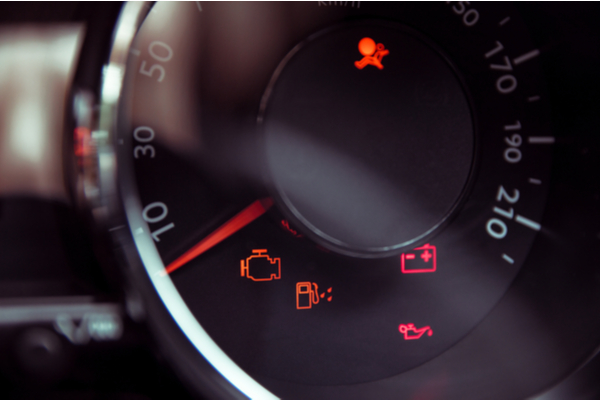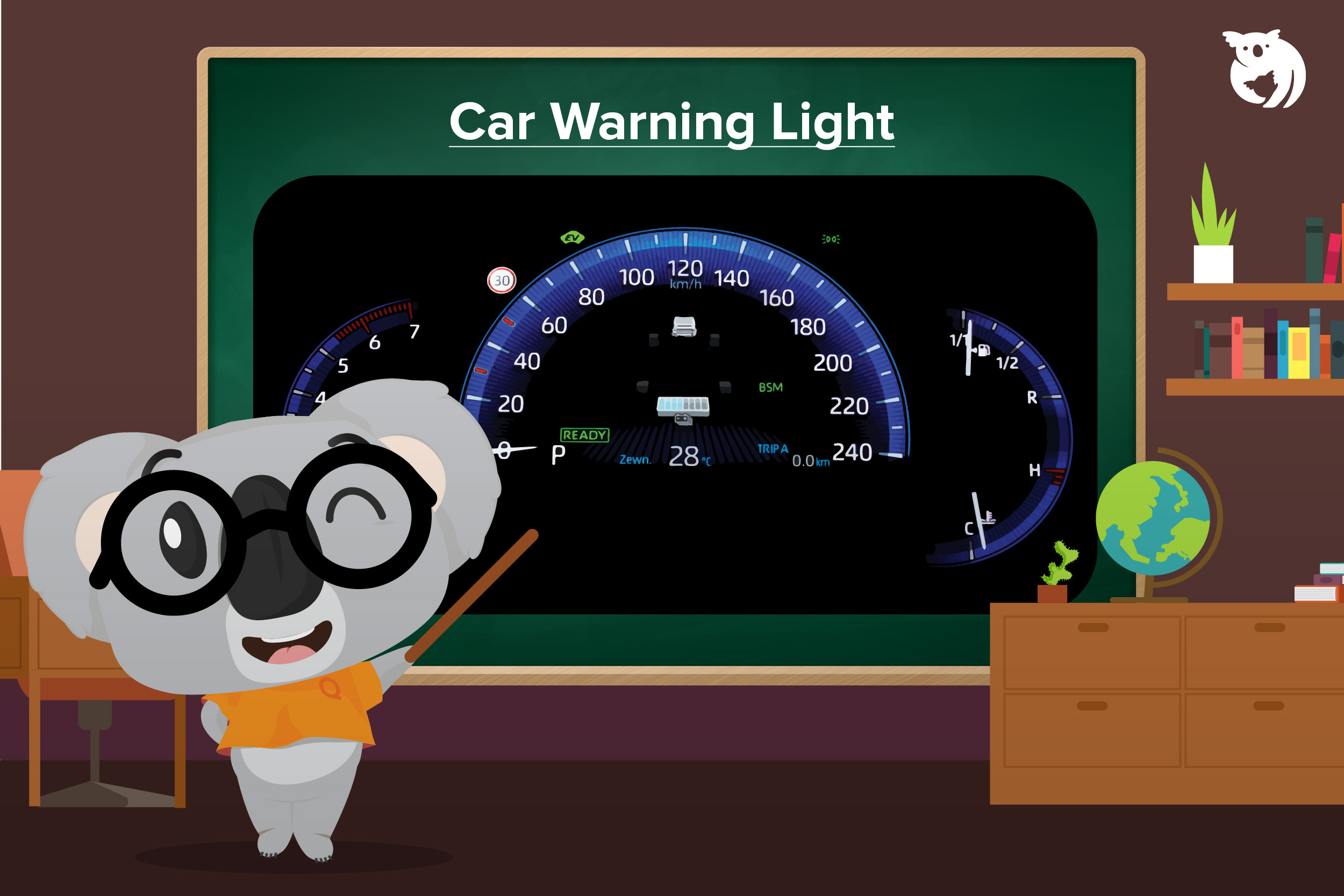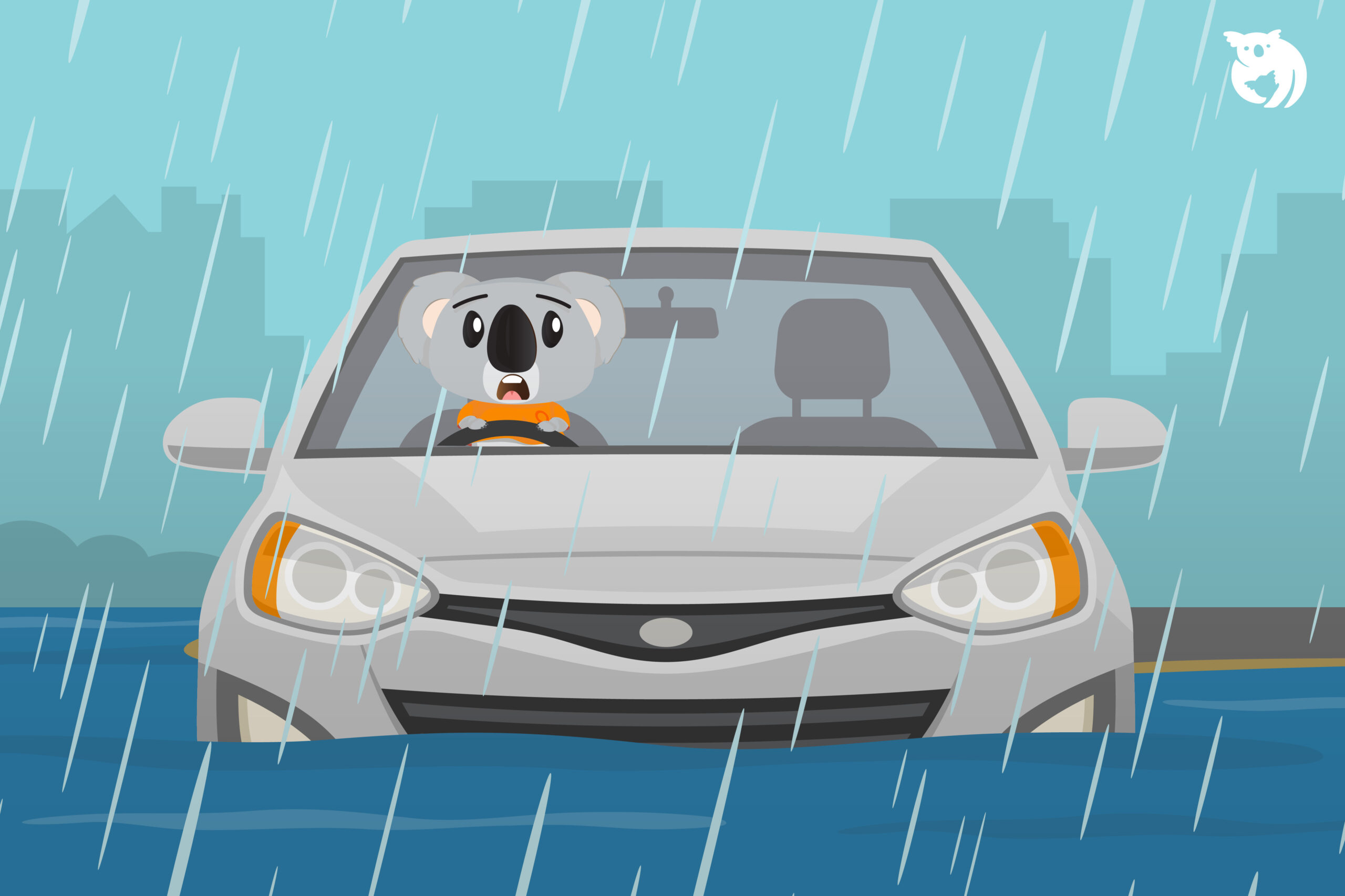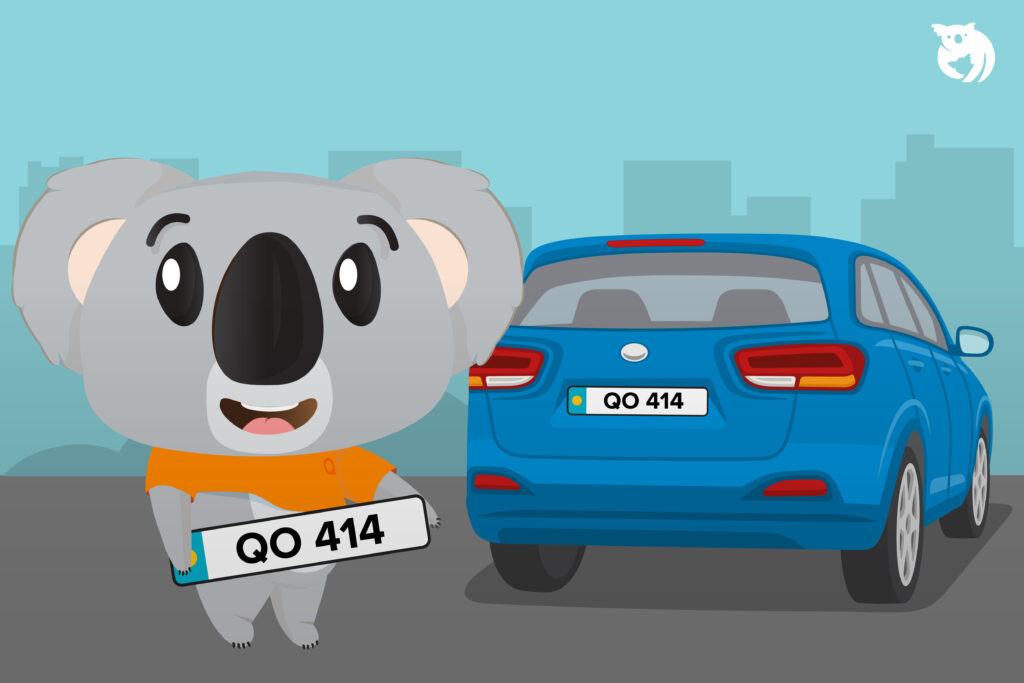Every car is equipped with indicator symbols, commonly known as car warning light. These lights are designed to notify drivers of any malfunctions or issues with the vehicle. Surprisingly, many people tend to ignore car warning light when they illuminate. However, this action is wrong and can be detrimental as it may lead to high repair costs.
Car Warning Light: 6 Important Car Warning Symbols You Need to Know
What’s the deal with car warning light? Should we be concerned when they light up? Don’t worry, for those who are not familiar with car warning light, Qoala is here to explain them further. Not everyone knows and remembers the meanings behind the symbols on the car dashboard.
However, it is crucial to identify and understand the meaning of car warning lights to determine the severity of the problem, whether it is major or minor. Here are six main symbols of car warning lights that you need to know:
1. Low Oil Pressure Symbol
Another name for this symbol is the oil pressure switch. It is called so because it resembles an oil lamp when viewed with the naked eye. Its actual name is the oil pressure switch.
If the car warning light for the oil pressure switch illuminates, it is likely that your vehicle’s engine is experiencing a major malfunction that could lead to damage to almost all engine components.
The oil pressure switch symbol lights up when your car’s lubricating oil is running low or insufficient. Additionally, low oil levels can be caused by leaks that result in engine oil leakage.
As a result, your car engine will become rough, leading to more severe damage and high repair costs.
So, what should you do if this car warning light illuminates while you are driving? First, you are advised to pull over your vehicle in a safe area and immediately turn off the engine.
Next, you need to check the engine oil level at the front of your vehicle. If the engine oil is still present and sufficient, it is recommended to drive your vehicle to a nearby workshop for further inspection.

2. Check Engine Light
The next car warning light symbol is the “Check Engine” symbol. This symbol lights up because the computer system in your car has detected a problem with the vehicle’s system. The situation and circumstances may vary depending on the type, year, and model of the car.
The check engine light symbol may illuminate due to engine, transmission, suspension, or brake problems. The best way to identify this problem is by conducting a more in-depth inspection or diagnosis. While driving, suddenly the check engine light illuminates. Can you continue driving or not?
When the check engine light illuminates while you are driving, you can still continue driving. However, you should seek further inspection as soon as possible.
However, if you notice significant differences in driving, such as rough driving, engine shaking or noises, it is advised to pull over in a safe area and contact a tow truck.
To contact a tow truck, you simply need to contact your car insurance provider. Usually, towing services are free if arranged through your car insurance provider.
Signs Your Car Engine Needs Overhaul
No car stays in perfect condition without maintenance. Every car has its own set of problems. As drivers, it can be difficult for us to determine whether our car engine needs an overhaul or not. However, besides car warning lights, there are signs that indicate the need for an engine overhaul. The signs are as follows:
White Smoke Coming Out of the Exhaust
When you notice white smoke coming out of your car’s exhaust, it indicates that engine oil has entered the combustion chamber. This can happen because the piston rings have worn out or become damaged.
Engine Misfires Due to Fouled Spark Plugs
Fouled spark plugs contaminated by leaking engine oil can cause fouling. Fouled spark plugs indirectly affect the performance of spark ignition and prevent it from functioning optimally. You can detect signs of your car engine’s declining performance:
-
- Engine misfires
- Unusual sounds from the engine
- Engine jerking while accelerating
Low Engine Oil
The problem of the engine consuming oil frequently is a clear sign that your car engine needs an overhaul. How do you know if the car’s oil level is low? Regularly check the oil level in your car engine using a dipstick to determine the actual oil level in your car.
Engine Temperature Rises
Frequent sudden rises in engine temperature leading to overheating indicate a leakage problem in the engine that affects the compression ratio. This is usually caused by a damaged cylinder head gasket, which results in a decrease in radiator coolant and its entry into the combustion chamber.
3. Engine Temperature Warning Light
The car warning light symbol can illuminate due to changes in the temperature within your car’s engine. When this indicator lights up, it means that the coolant temperature has exceeded the safe level, and the engine is running at an extremely high temperature.
This situation can occur if there is a coolant leak, air bubbles in the cooling system, or a malfunctioning coolant pump. When this symbol lights up, it should not be ignored.
You must act immediately because there is a danger that your car engine will suffer serious damage. When the car warning light symbol lights up, it’s advisable to pull over to the side of the road.
Let the engine idle without pressing the accelerator pedal. Switch on the air conditioning. Don’t switch off the engine immediately, but wait a while before turning it off.
If a coolant leak is detected, the engine must normally be stopped immediately. Signs of a coolant leak include a burnt, sweet smell, steam coming out from under the bonnet or hot liquid flowing under the vehicle.
If you notice any of these signs, it’s best to switch off the engine or let it idle for a few minutes to cool it down before turning it off.
What happens if you ignore this indicator? This will quickly cause serious damage to the most important components in the engine.
In addition, the cylinder head may warp, resulting in higher repair costs and the need to replace the entire engine block.
How to Deal with an Overheating Car Engine
Here are some tips to address an overheating car engine:
Check the Hoses
To ensure that the hoses are in good condition, it is recommended to inspect the top hose and bottom hose. Make sure there are no cracks or signs of wear on the hose surfaces. To identify if the hose has cracks, you can squeeze it.
Inspect the Radiator
The radiator commonly experiences leaks in the top seam and bottom seam areas. The cooling fins can also develop leaks. If your radiator is leaking, it may be caused by rock impacts.
If the cooling fins are leaking, you can repair them with a sealant available at car spare part shops or supermarkets, or you can leave the task and repair to a mechanic. Another alternative is to obtain a used or new radiator.
Replace the Radiator Fan
Pay attention to the speed at which the radiator fan rotates. Weak rotation can prevent the fan from drawing in the necessary amount of air to cool the radiator. If this situation occurs, the best step to take is to replace the radiator fan motor.
You should also observe the duration of the fan’s rotation. If the radiator fan stops spinning too quickly, it will fail to cool the radiator and cause the car’s temperature to rise.
This is especially crucial when stuck in traffic. Typically, the radiator fan will rotate for about 20-30 seconds during each operation and effectively lower the temperature indicated on the temperature gauge.
4. Handbrake Warning Light
The handbrake is a crucial component in a car. It allows you to prevent violations and control the movement and speed of your vehicle.
When the car warning light symbol illuminates, it can be caused by two things: low brake fluid or damage to the master brake pump.
Additionally, worn brake pads can also cause this symbol to light up. If you have identified that the issue comes from the car’s brake pads, it means that the thickness of the brake pads has exceeded the minimum level or the brake pads have become thin.
The aforementioned conditions will lead to a significant decrease in brake fluid level and a reduced quantity in the reservoir. Under normal circumstances, brake fluid will decrease or diminish, but not as much as when your brake pads are worn.
The solution is to replace the brake pads with new ones and refill the brake fluid.
5. ABS Warning Light
The anti-lock braking system (ABS) is a crucial vehicle safety system that ensures the tires do not lock under high braking force.
Proper maintenance of this system is essential for road safety. One of the reasons for the car warning light to illuminate is a blown fuse.
If there is a problem with the vehicle’s components, the warning light will briefly illuminate and then go off on the instrument panel. However, if the ABS light continues to stay on after starting the engine, it indicates that the ABS fuse has blown.
In addition, issues with the speed sensor system can also cause the car warning light to illuminate. There are speed sensors installed with the ABS to measure the speed of the vehicle’s wheels.
Information such as wheel speed is sent to the computer system and the ABS system to identify the wheel’s speed level.
6. Battery Warning Light
The next car warning light is the battery warning light. When this symbol illuminates, is it a battery problem or an alternator issue? Many assume that it indicates a dead battery.
However, the battery symbol is an indicator of a problem with your car’s battery charging system. When you encounter this situation, here’s what you should do:
- Turn off all electronic components in the car (radio, air conditioning, fan).
- Find a nearby workshop/service centre and drive there (~5KM).
- If there is no nearby workshop, drive in a safe lane and stop if possible.
- Get towing service from your insurance provider.
For a properly functioning car, the battery is only used to start the engine. Once the engine is running, the alternator takes over and supplies electricity to all car components, including recharging the battery.
However, when the alternator is damaged and fails to function, the vehicle’s electrical flow relies solely on the car battery’s power, which cannot last for long.
So when your car suddenly dies while driving, and you see the battery warning light illuminating before the car shuts off, it indicates a problem with your alternator/charging system.
Signs that the Car Alternator Needs to be Replaced
Here are some signs that your car alternator needs to be replaced immediately:
Dim Headlights
One of the main symptoms indicating the need for alternator replacement is dim headlights. This is because the alternator contributes electrical power to the vehicle.
If there is a problem with the alternator, it will cause a decrease in your vehicle’s potential. Additionally, you may also notice other accessories that use electrical power, such as air conditioning, the gauge cluster, and power windows, not functioning properly.
Noises and Smells
Unusual noises from the engine compartment and rubber or burning wire smells are early warning signs that your car alternator is experiencing issues.
You are advised to perform an initial inspection when you encounter strange noises in the car engine or smell burning rubber.
Prompt replacement is necessary to prevent further damage to other components.
Damage to Other Accessories
As mentioned earlier, the alternator supplies power to other car components. When the alternator fails to provide sufficient electrical power to your car, it will result in damage to car accessories such as the radio, windows, air conditioning, and other accessories that require electrical power.
If you have difficulty raising the car’s windows or if the radio suddenly stops working, it is an indication that your car alternator is already faulty. If not addressed promptly, the car warning light will begin to illuminate.
Battery Damage
Have you ever experienced changing the battery but the car still won’t start? It may not be due to a battery problem, but rather an issue with the alternator.
This occurs when the alternator fails to supply enough electrical current to charge the battery, indirectly causing the engine to fail to start.
Adhere to Car Maintenance Schedules to Avoid High Repair Costs
Make sure to regularly maintain your vehicle’s components to prevent unexpected damages. Car warning lights indicate that your car is experiencing problems.
Perform immediate inspections when these warning lights illuminate. If you delay or ignore the warning lights, other components are likely to be damaged. If that happens, the repair costs are expected to be significantly high.
Therefore, whenever the car warning light illuminate, promptly have them checked by nearby car workshops.
Taking care of your car ensures its optimal performance. Apart from immediately taking your car to a workshop when the warning lights illuminate, car insurance is extremely helpful in case of emergencies.
Therefore, you need to get the best car insurance for your vehicle. Want to get the best car insurance? Click HERE.

 EN
EN
 MY
MY








